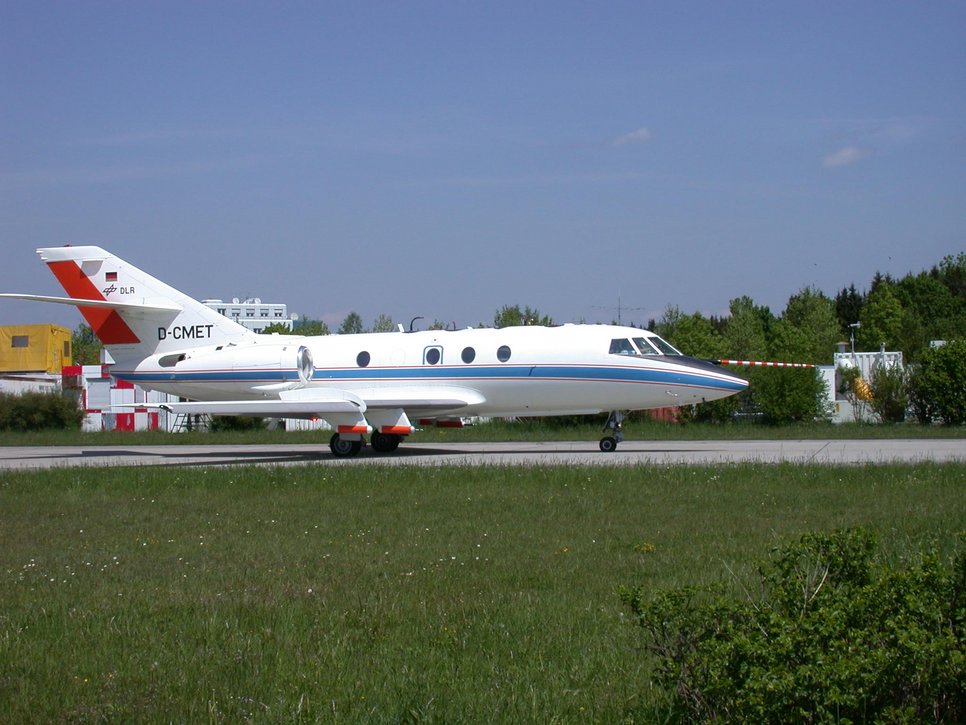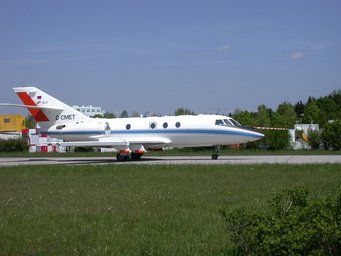PAZI (Particles From Aircraft: Impact on Cirrus Clouds and Climate)

In May 2003, we performed the first measurements with the Aerodyne Aerosol Mass Spectrometer (Q-AMS) in the tropopause region.
The AMS detects particles in the size range between 50 and 1000 nm and measures quantitatively the mass concentrations and size distributions of ammonium, nitrate, sulfate, and organics. The aircraft measurements were part of the research project PAZI (Particles From Aircraft: Impact on Cirrus Clouds and Climate), which was funded by the German HGF (Hermann von Helmholtz-Gemeinschaft Deutscher Forschungszentren) research organization. The main objective of this project was to investigate the relationship between aircraft exhaust particles and the formation of cirrus clouds. The measurements took place in Southern Germany using the twin-jet research aircraft Falcon of the DLR (Deutsches Zentrum fuer Luft- und Raumfahrt). The measurement flights included sampling in aged aircraft exhaust as well as background flights in regions with little air traffic, at altitudes between 8000 and 12000 m, representing the mid-latitude upper troposphere.
Instruments:
Q-AMS
People involved:
J. Schneider, N. Hock, S. Weimer, S. Henseler, T. Böttger
Results
Schneider, J., S. S. Hings, B. N. Hock, S. Weimer, S. Borrmann, M. Fiebig, A. Petzold, R. Busen, and B. Kärcher, Aircraft-based operation of an aerosol mass spectrometer: Measurements of tropospheric aerosol composition, J. Aerosol Sci., 37, 839-857, doi:10.1016/j.jaerosci.2005.07.002, 2006.
